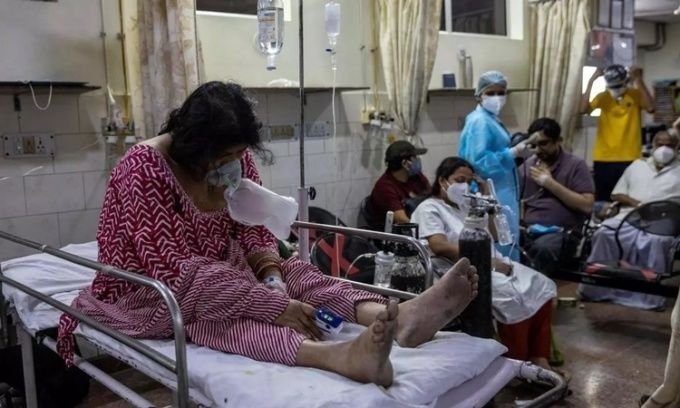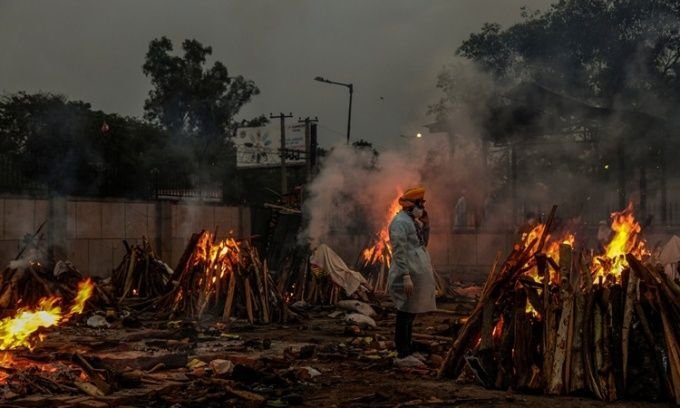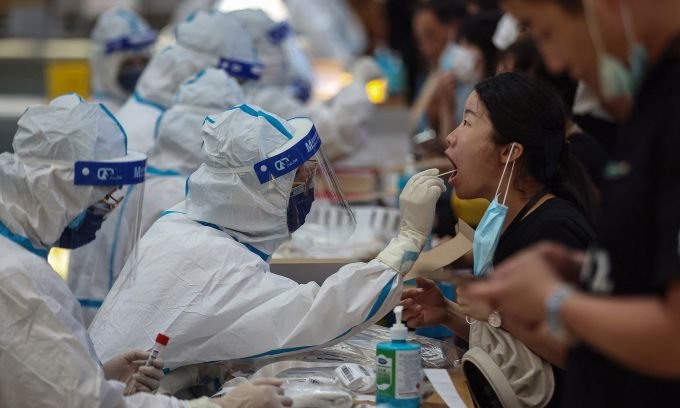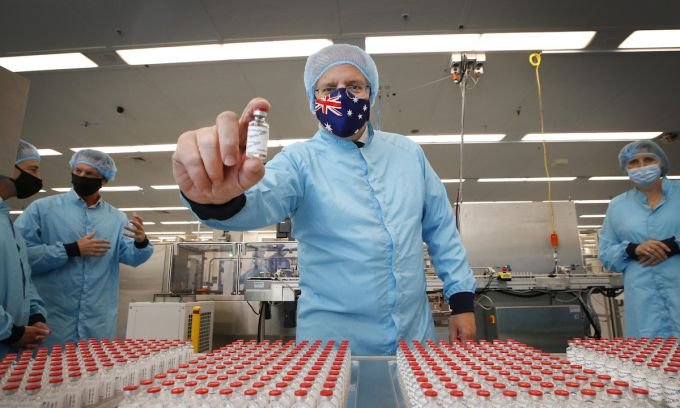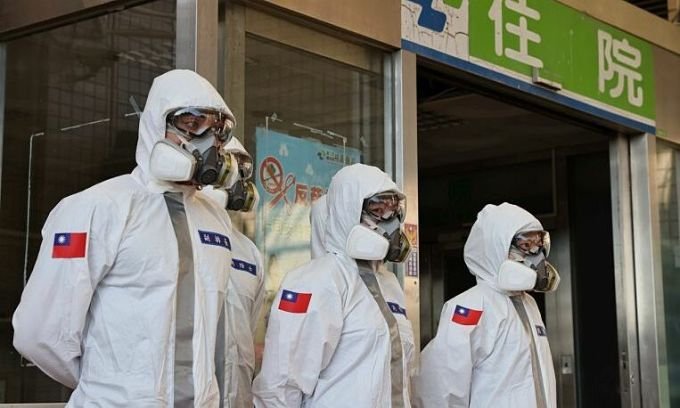When the Covid-19 crisis began to show signs of becoming more serious in India last month, dozens of countries pledged to provide important medical supplies and equipment to the country.
Planes carrying ventilators, oxygen and antiviral drugs began arriving in India last week, with photos showing the huge packages being unloaded at New Delhi airport.
Covid-19 patient at a hospital in New Delhi, India, May 1.
But for many days afterward, most of the above goods remained motionless in warehouses.
On the evening of May 4, the Indian government issued a statement denying accusations of delay in distributing relief goods, affirming that it had established a `reasonable mechanism` to get medical supplies to where they are needed.
But in reality, many states and local governments claim they have received little or no communication from the central government regarding how or when relief goods will reach them.
`We sent delegations to the capital to find out about the status of oxygen sources, medicines and vaccines but there was no clarification,` Raghu Sharma, health leader of Rajasthan state, said earlier this week.
The central government has `left states in the dark amid the pandemic`, he said, calling for a `more transparent environment` to be established.
On May 4, the Indian Ministry of Health announced that it had delivered aid to two hospitals in the cities of Jodhpur and Jaipur in the state of Rajasthan.
There are many `bottlenecks` that lead to these delays, such as cumbersome bureaucracy, human error or time-consuming processes.
India on May 5 recorded more than 380,000 new infections and nearly 3,800 deaths from Covid-19.
The lack of oxygen is especially serious in the capital New Delhi and surrounding areas.
At least 12 people, including a doctor, died at Batra hospital on May 1 due to oxygen depletion.
`Patients are dying before our eyes. I’m sorry I couldn’t save them,` he said.
One issue highlighted by Indian media is the government’s lack of actionable procedures in place before receiving aid.
They began implementation on April 26 and issued the Standard Operating Procedures (SOP), a document guiding how to distribute aid, on May 2.
Even once the SOP has been issued, the allocation process remains complex and is likely to be subject to further delays.
Aid goods from Thailand and the United Arab Emirates (UAE) were delivered to New Delhi airport on April 29.
When aid arrives, it will be received by the Indian Red Cross.
Once cleared, the goods will be handed over to the Ministry of Health and government-owned medical product manufacturer HLL Lifecare.
But this is really a giant `logistical nightmare` because `goods from abroad are arriving in different quantities, specifications and times,` announced an announcement from the Indian Ministry of Health on May 4.
Therefore, Indian authorities have to waste valuable time clarifying inconsistent information right at the airport.
India is a large country with more than 1.3 billion people and most foreign aid goes to New Delhi.
It’s unclear how much aid is still waiting to be processed, but the first shipments have begun arriving where they are needed most.
However, this aid only helps relieve a very small part of the pressure on the Indian health system.
While looking to deliver aid to the states, the Indian government is also working to increase domestic oxygen production.
But doctors, local officials and desperate patients tell a very different story.
At a hospital in Meerut, a city in the state of Uttar Pradesh, a 55-year-old patient had to wait 6 days to receive a ventilator and her family even had to bring their own oxygen tank.
However, after that, the patient’s condition worsened again and this time doctors could do nothing more.
A military plane carrying emergency aid to India.
Similar scenes took place in most major Indian cities.
A court in Uttar Pradesh also ordered the government to `take immediate remedial measures` to end the situation of patients dying due to lack of oxygen supply.
`Causing a patient to die because of not providing enough oxygen to the hospital is a criminal act… by those who were tasked with ensuring the liquid oxygen supply chain,` the court in Uttar Pradesh said on May 4.
The central government has responded by stepping up emergency measures.
This week, some enhanced oxygen supplies were delivered to states hit hard by the epidemic by rail.
Vu Hoang (According to CNN)






